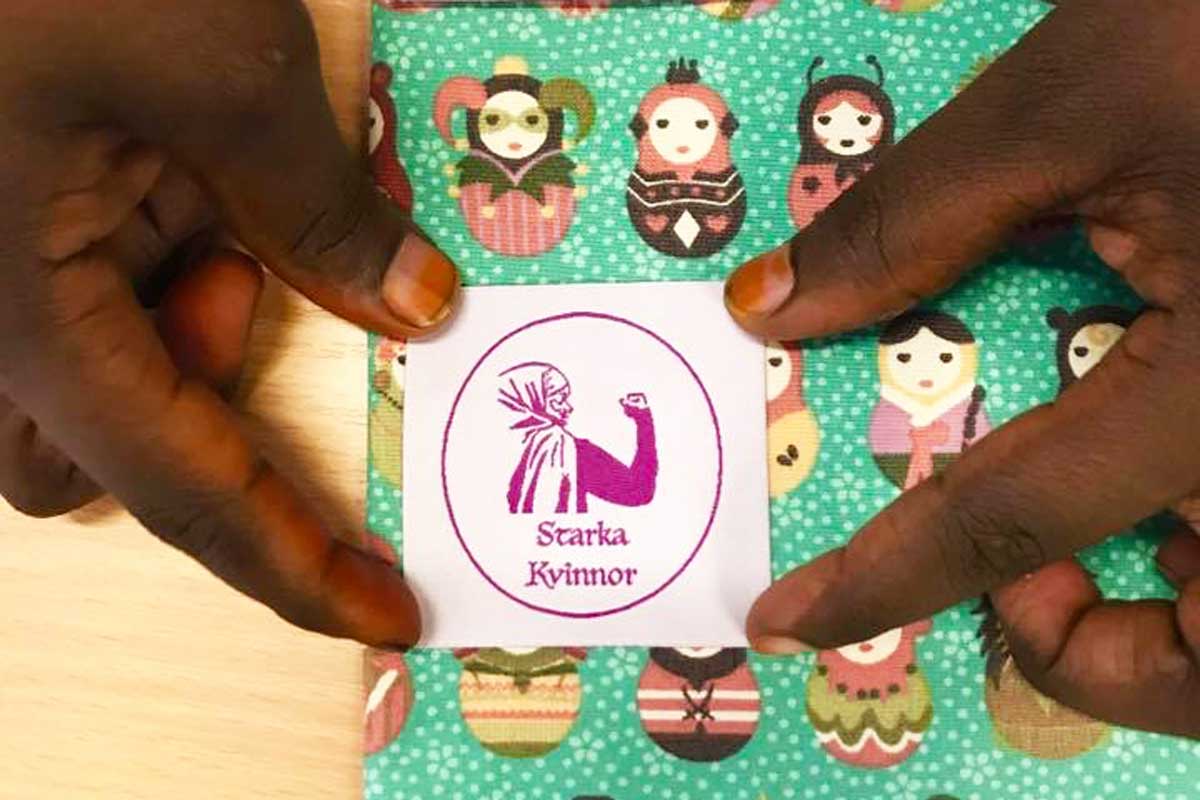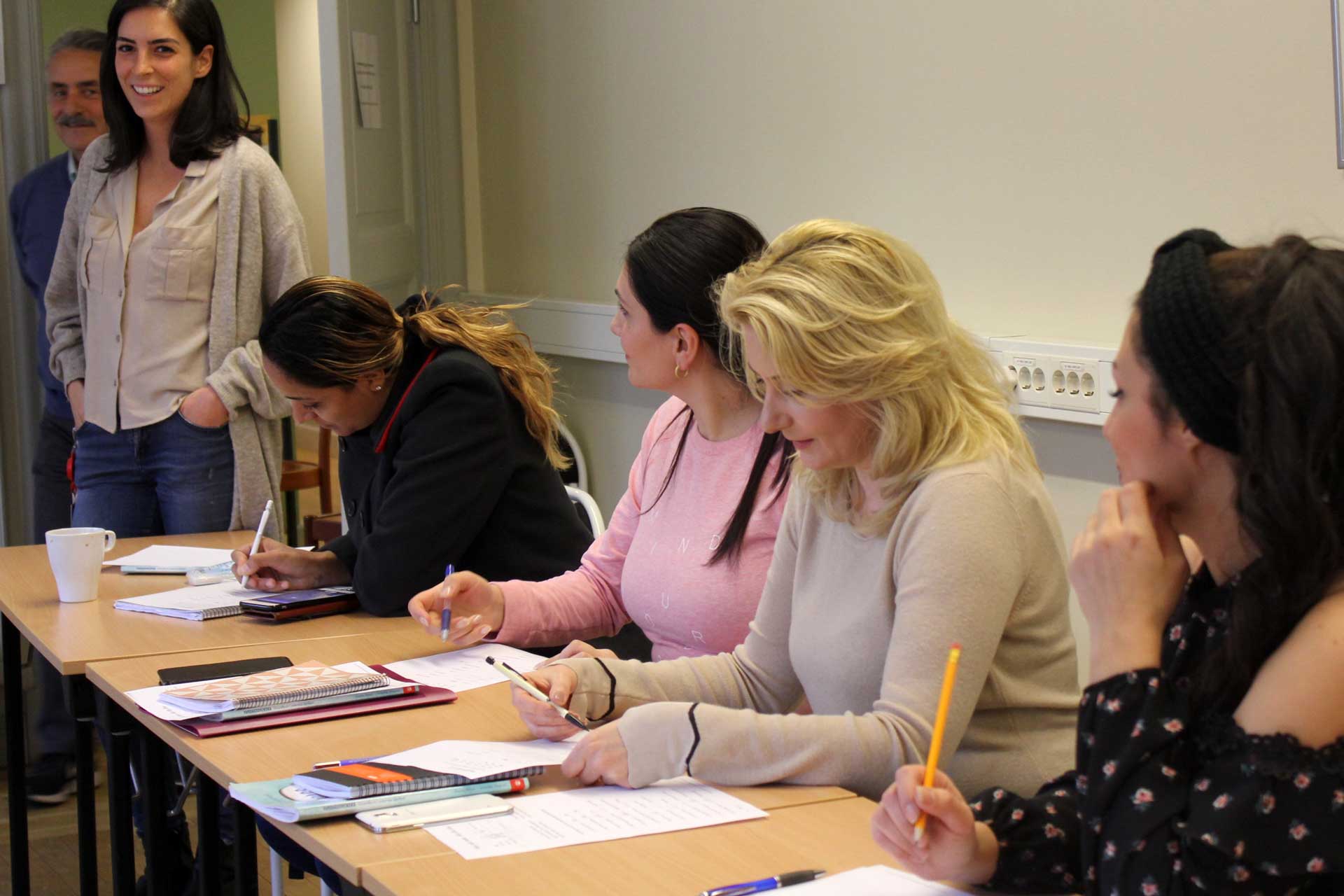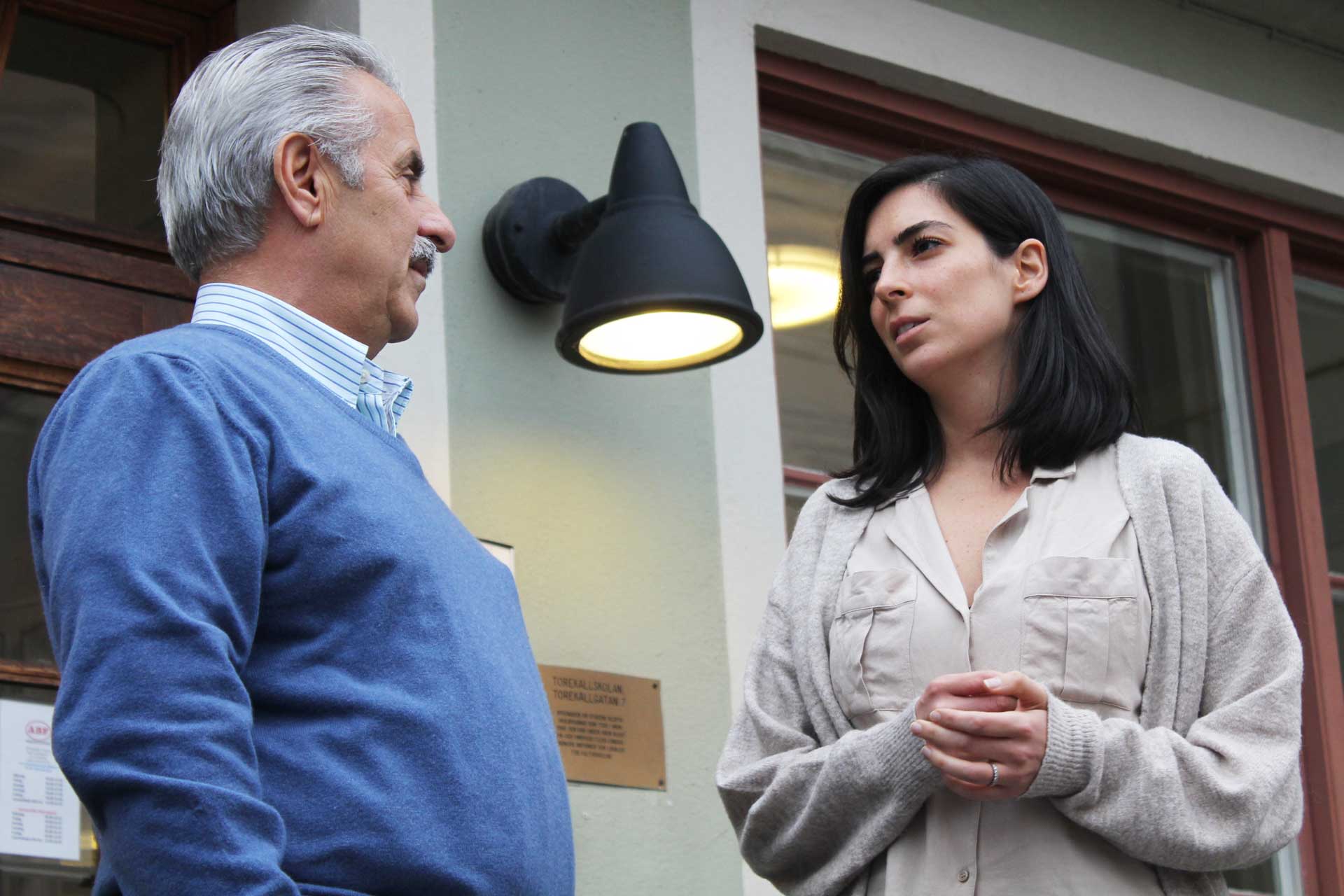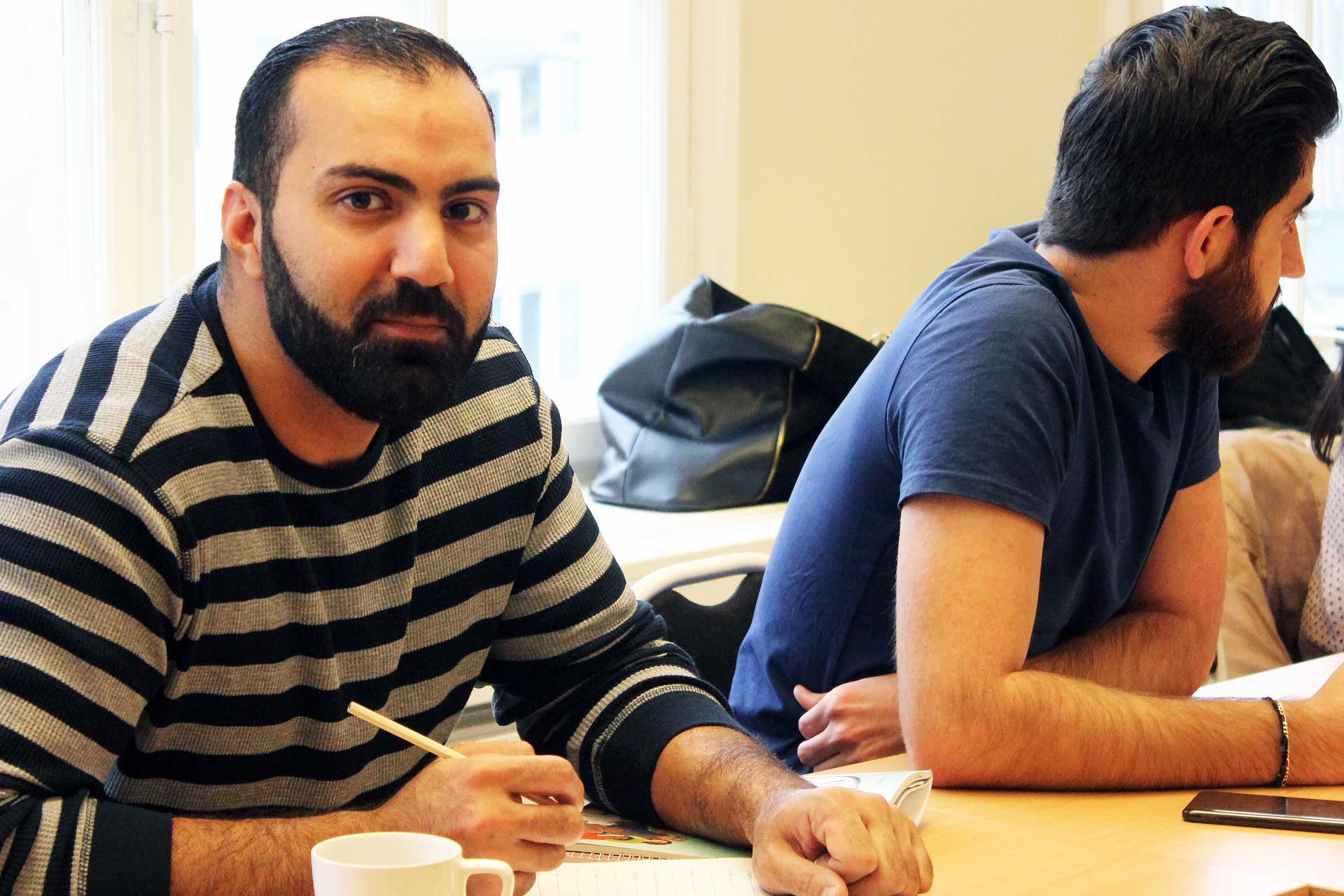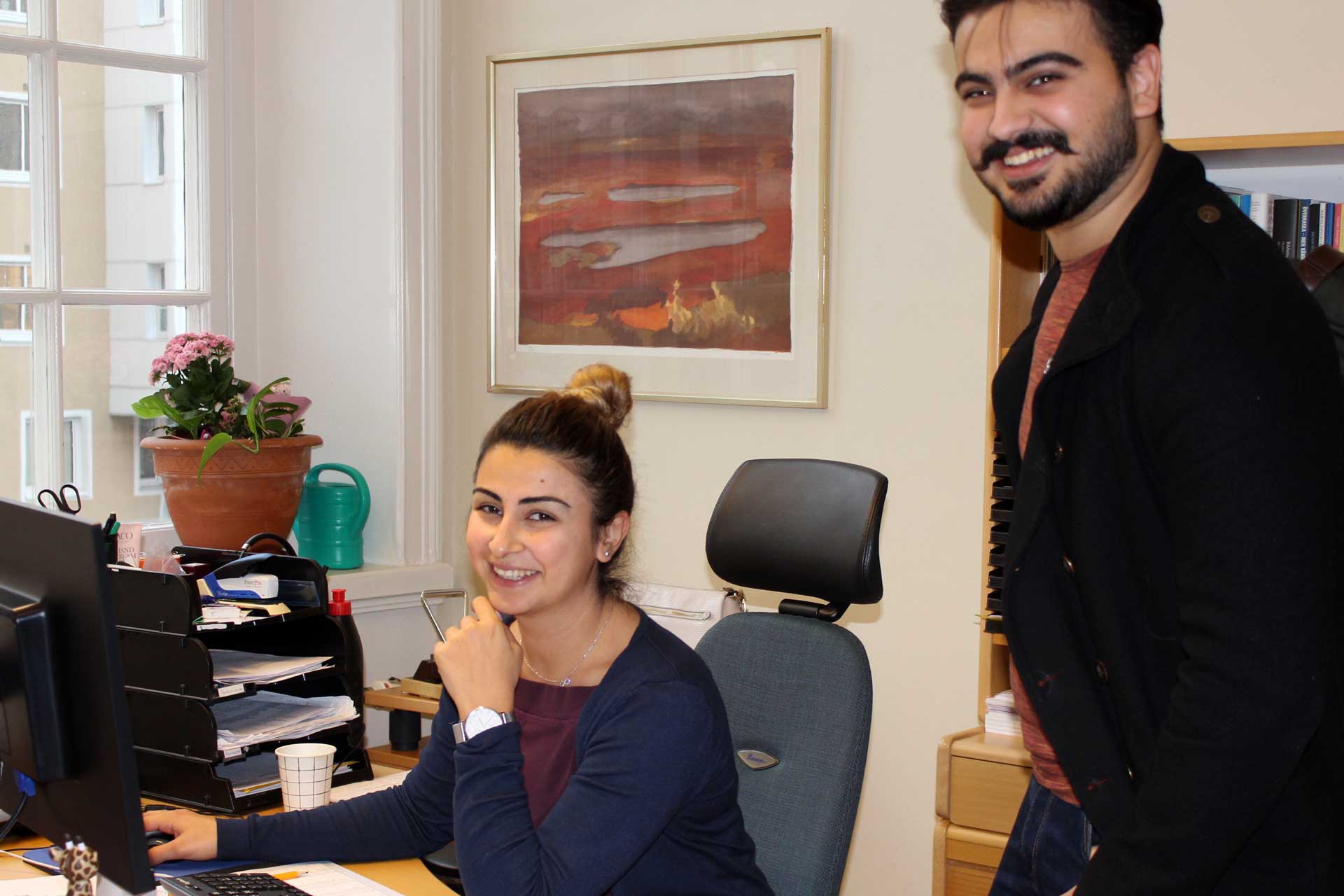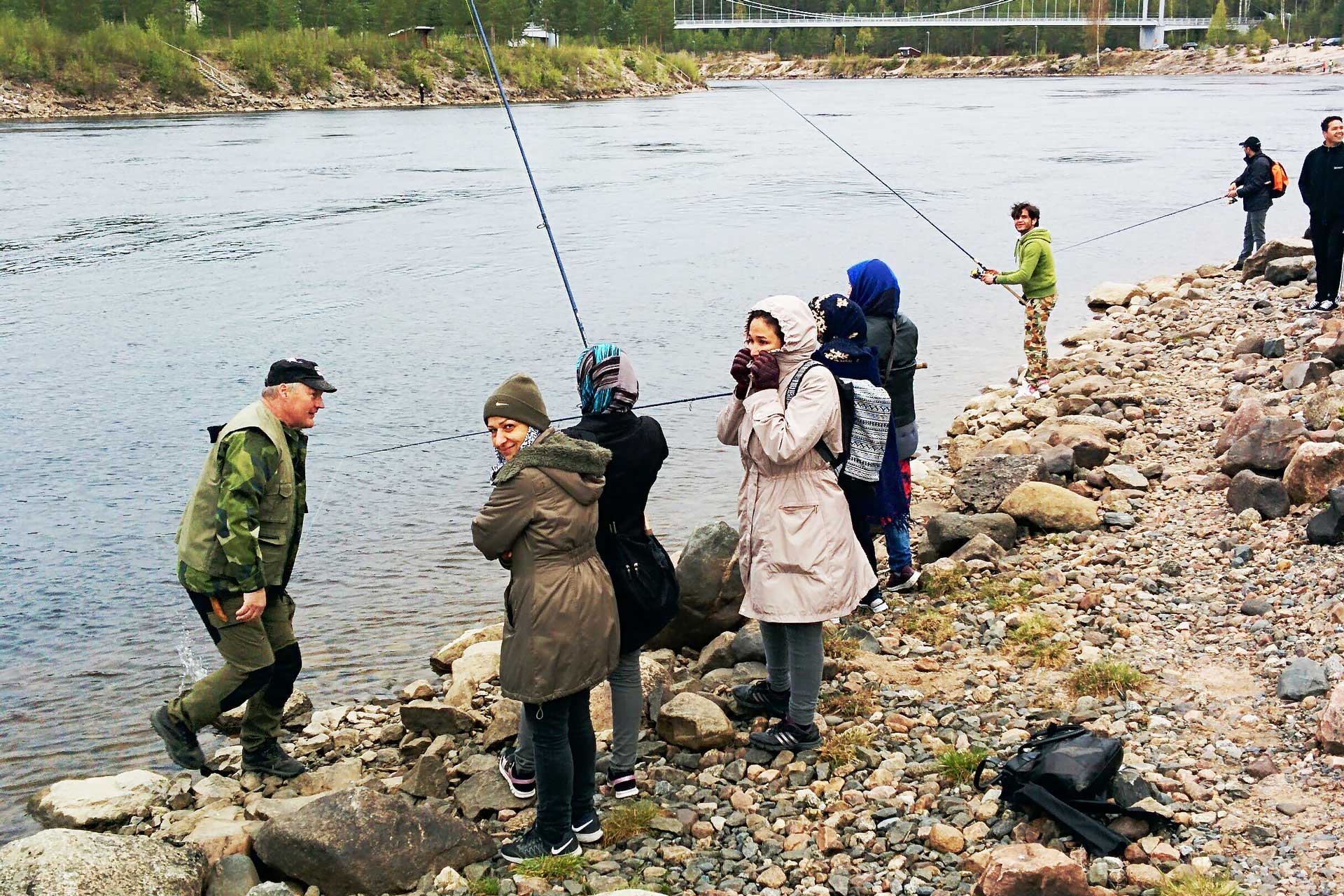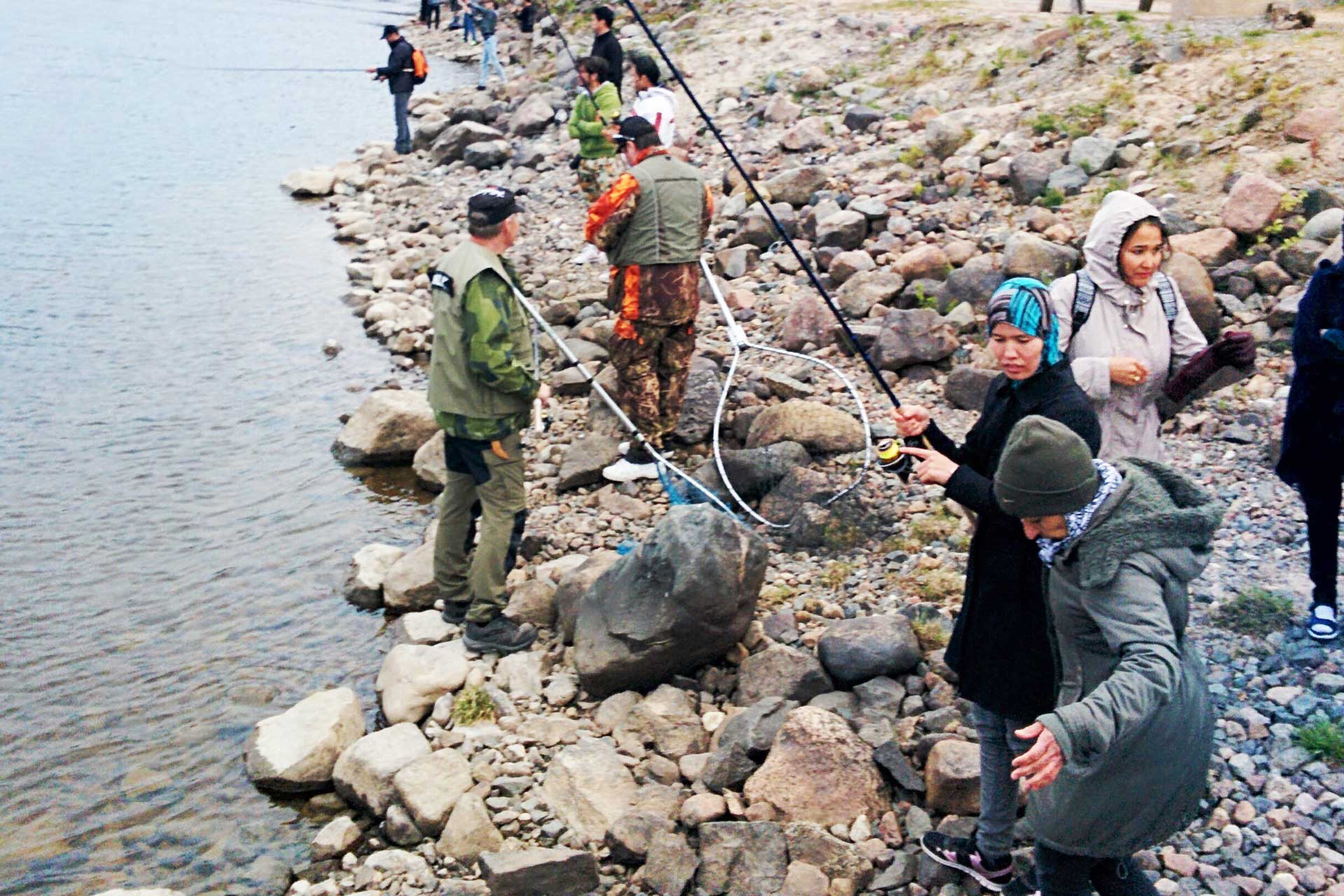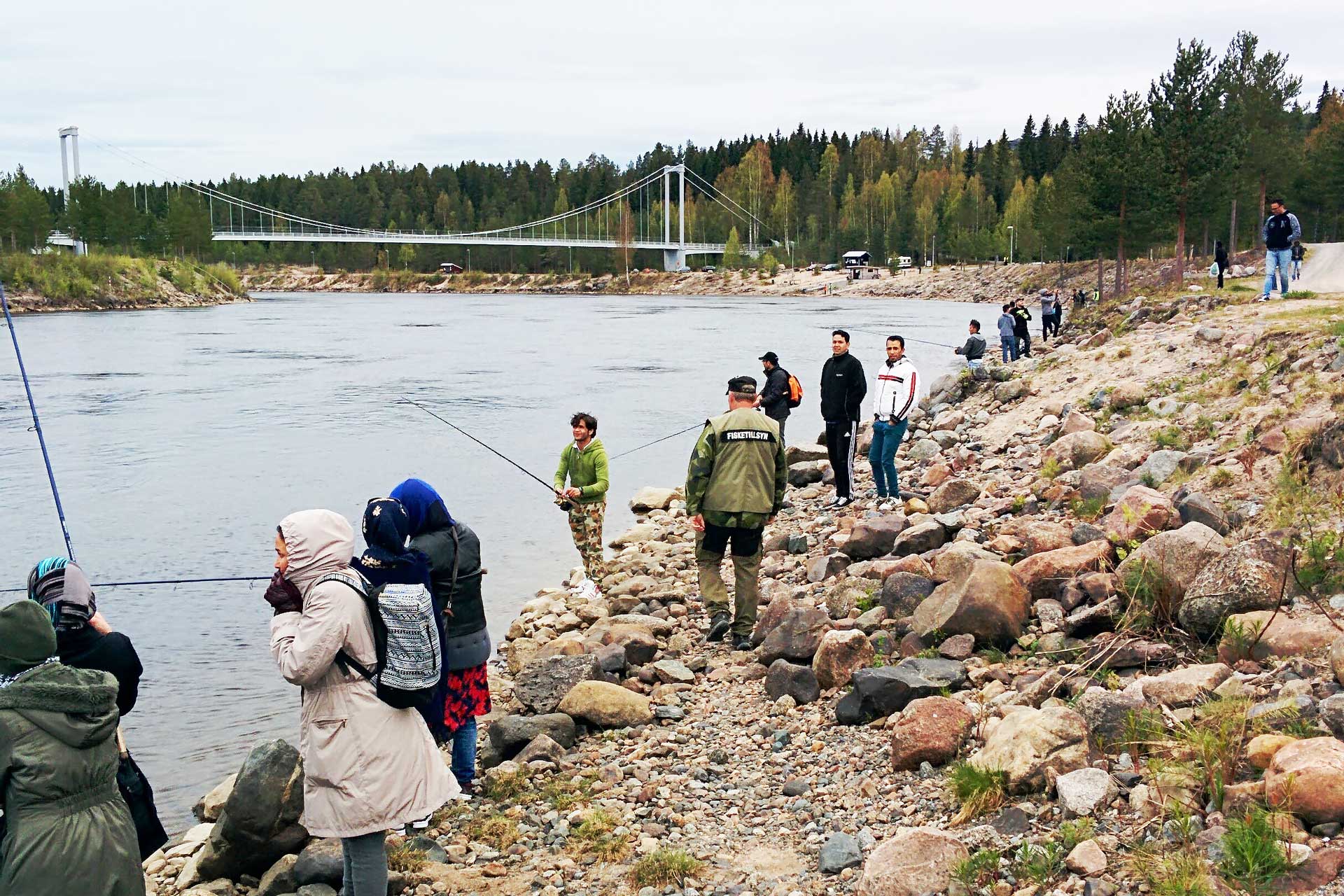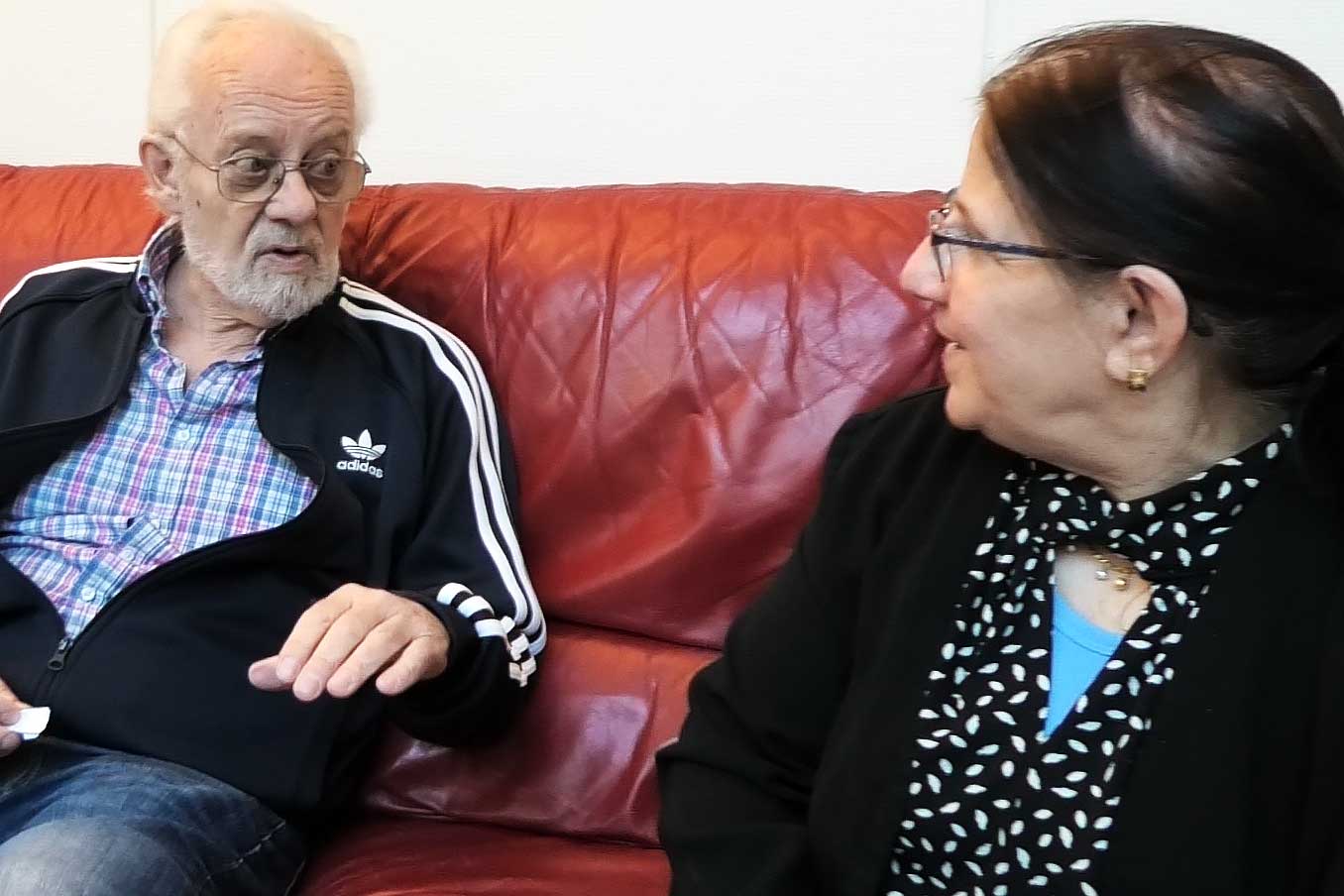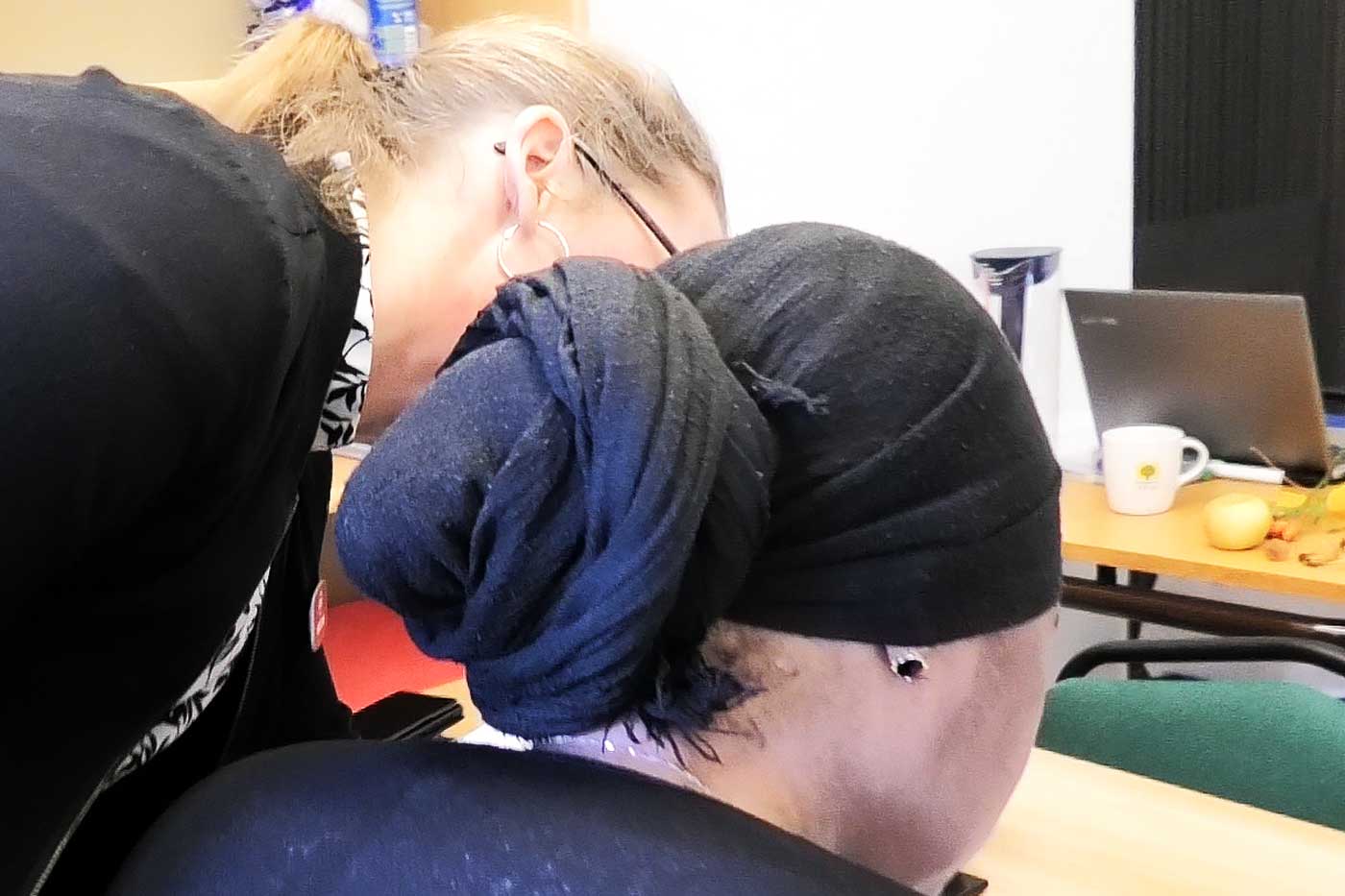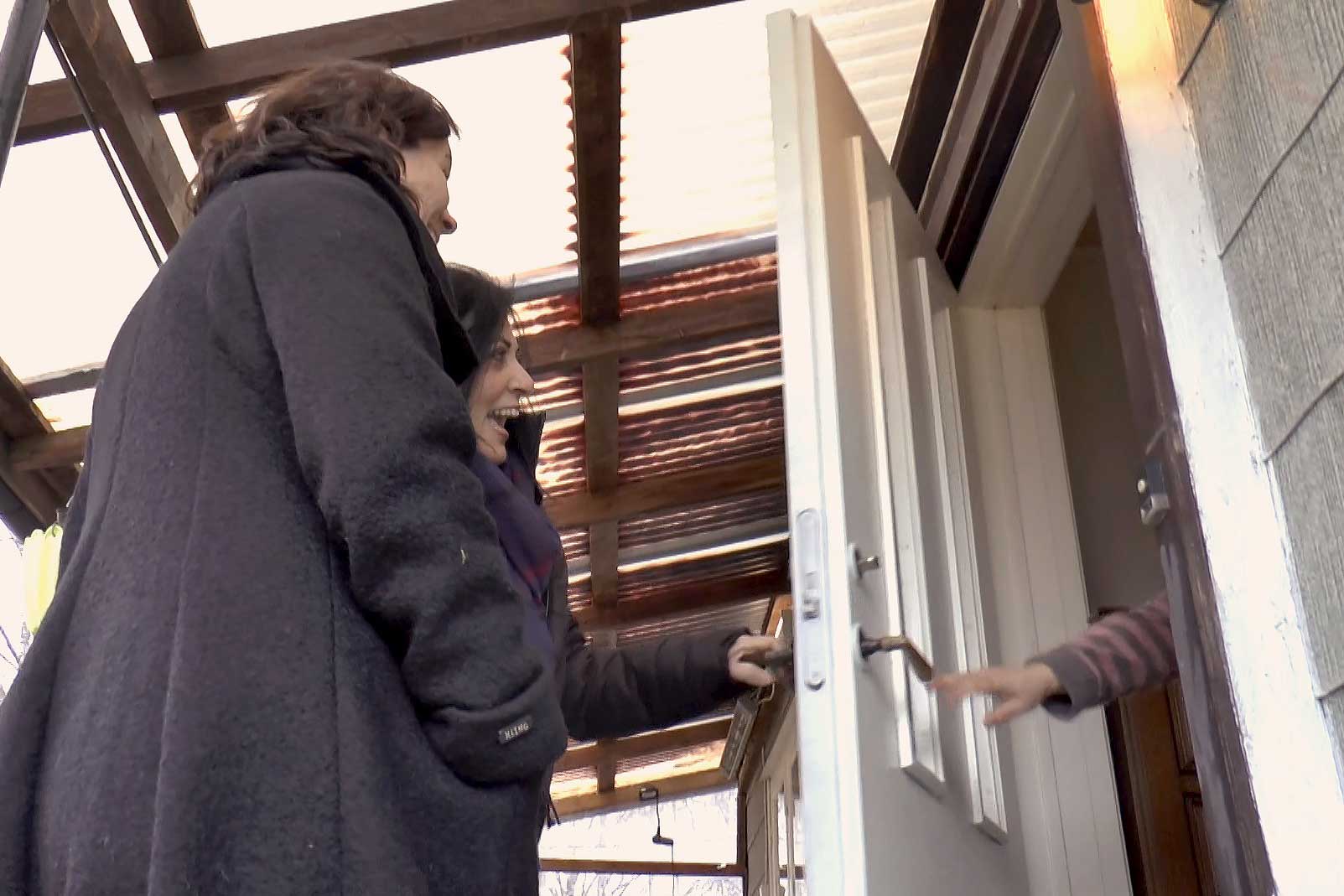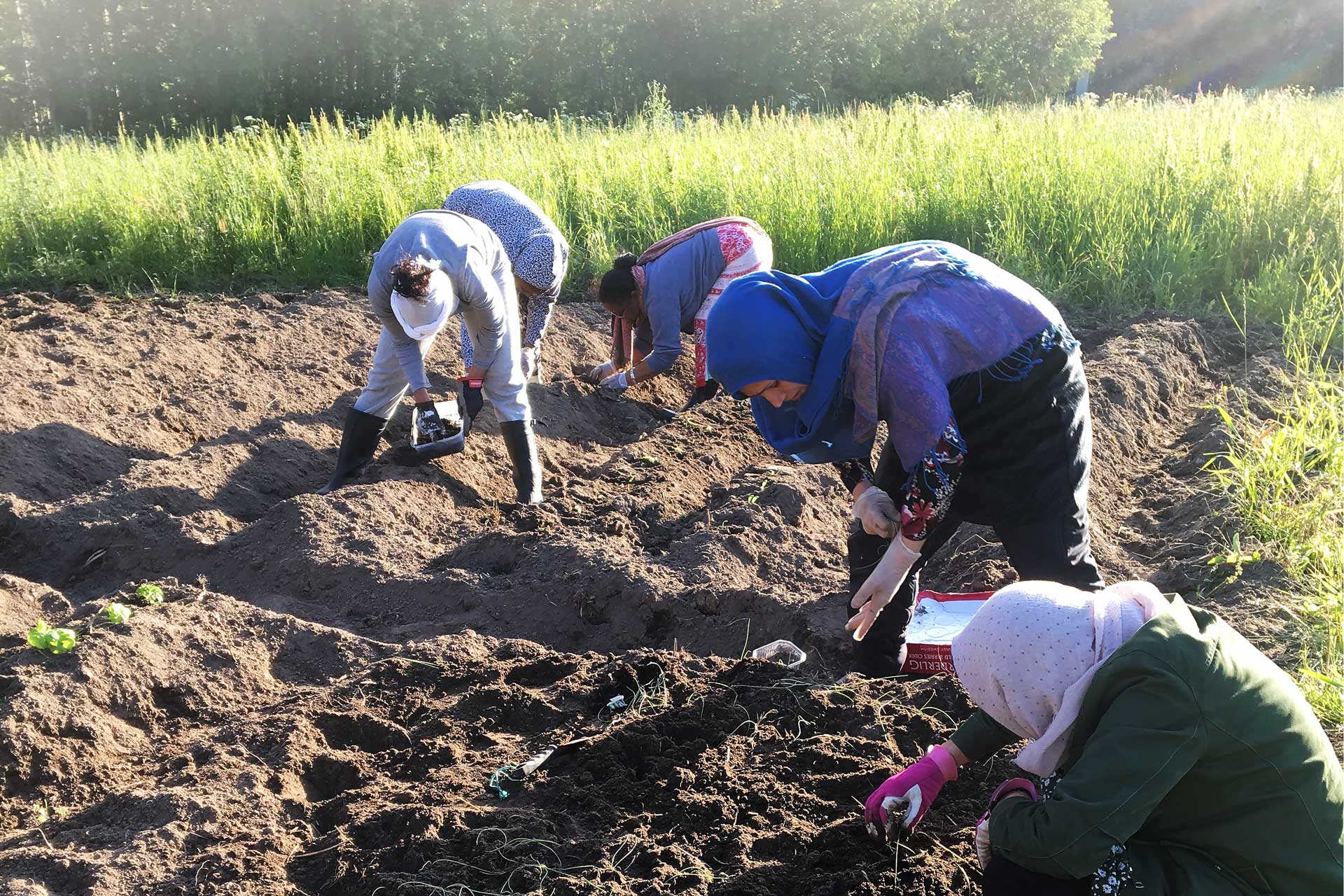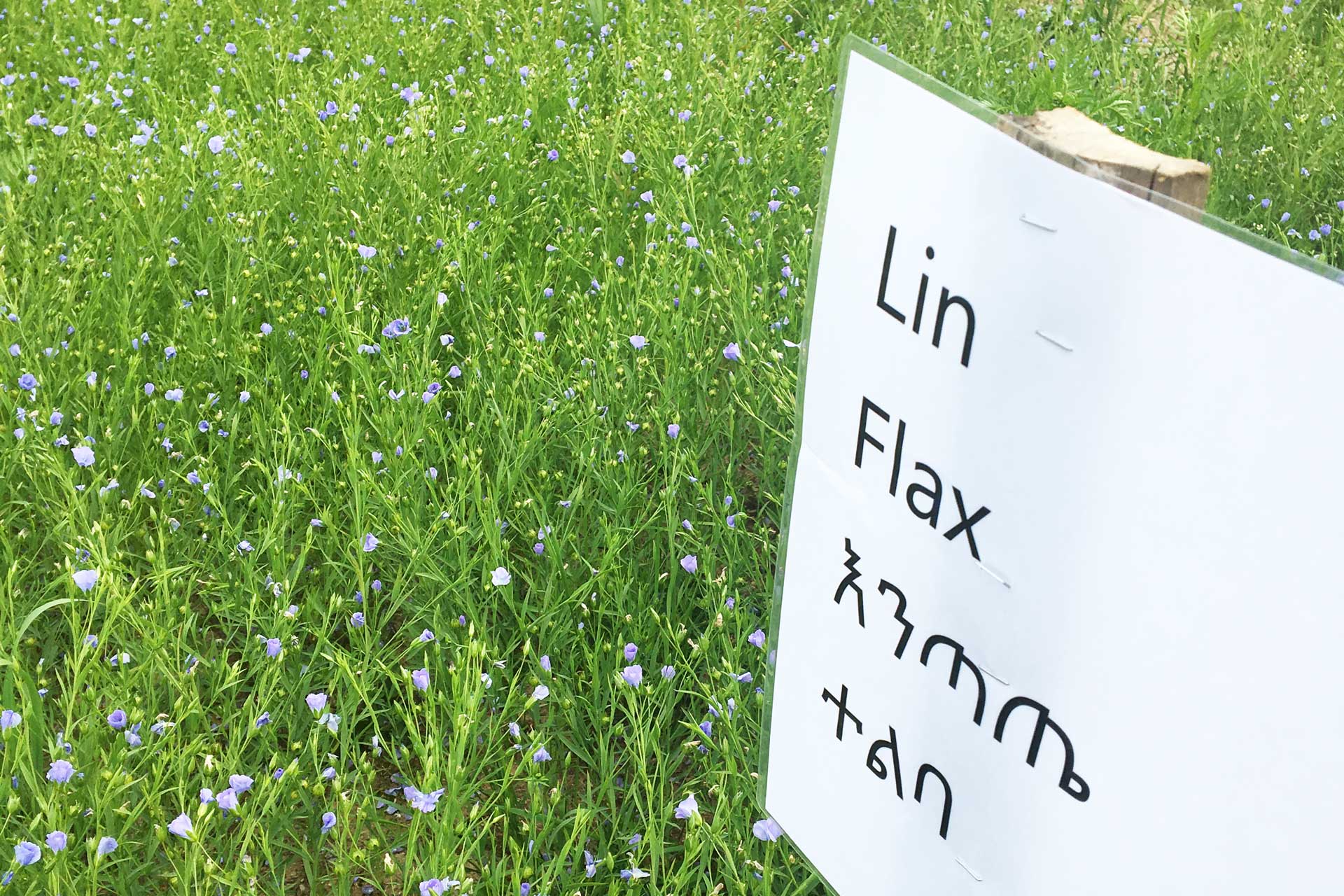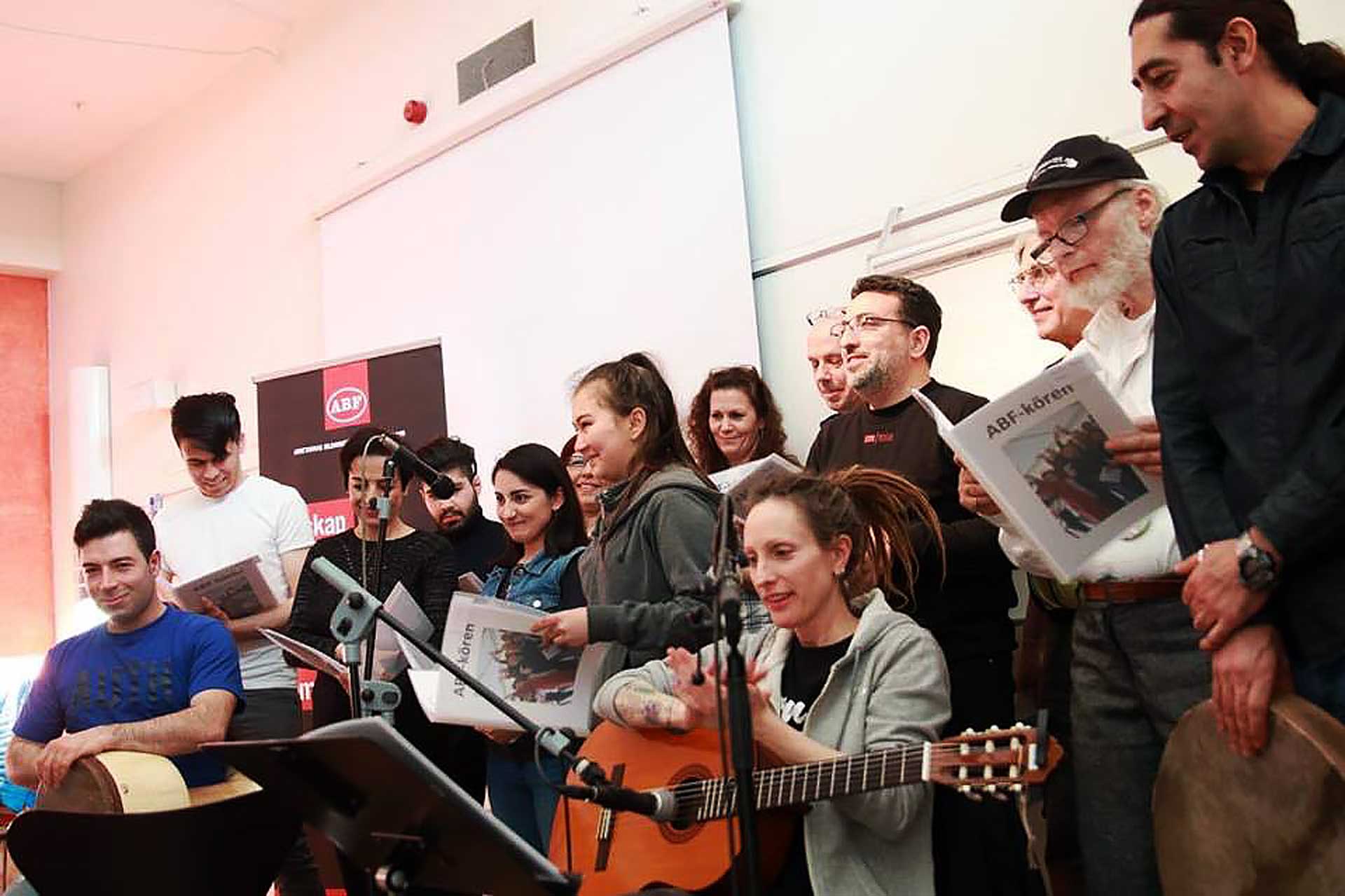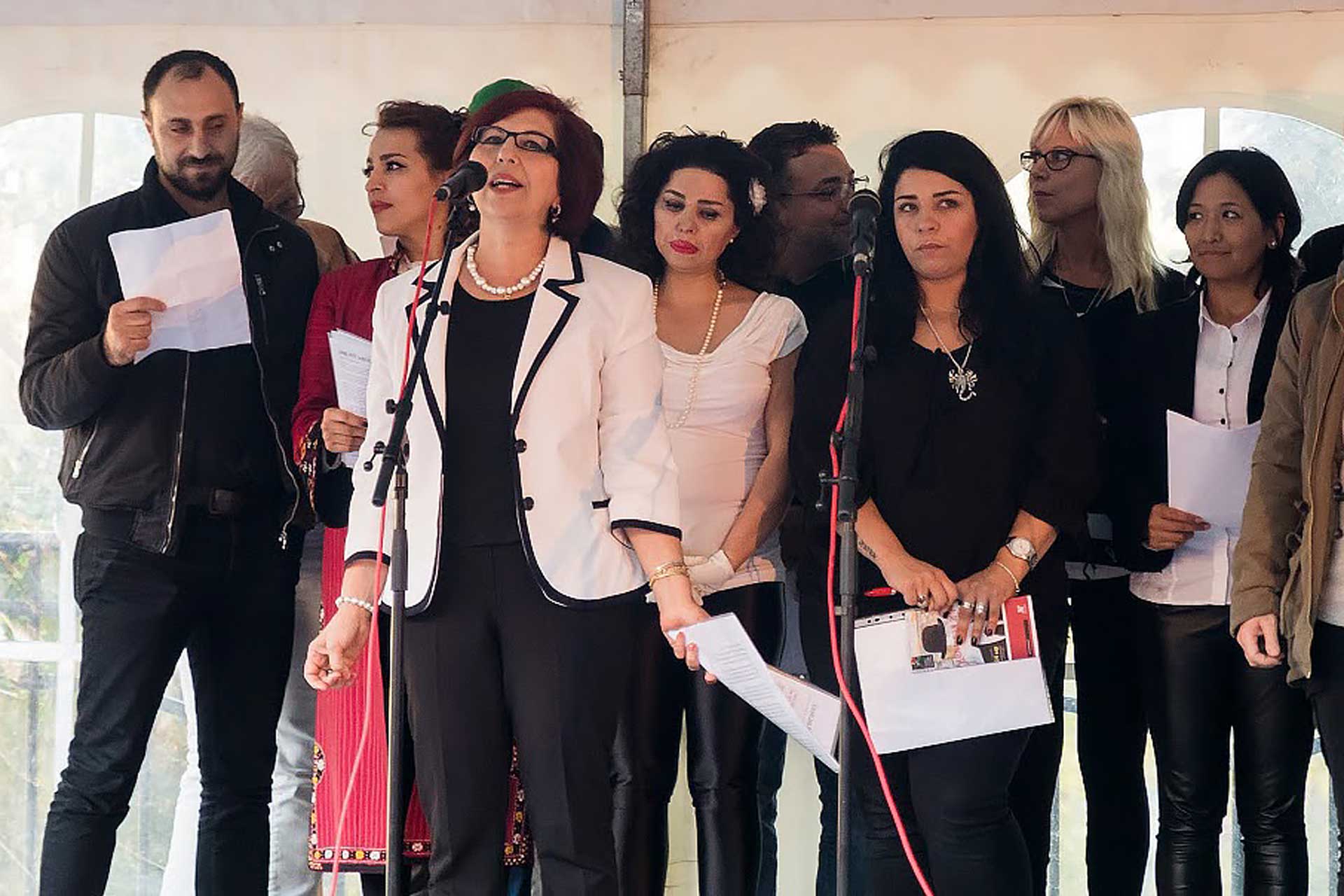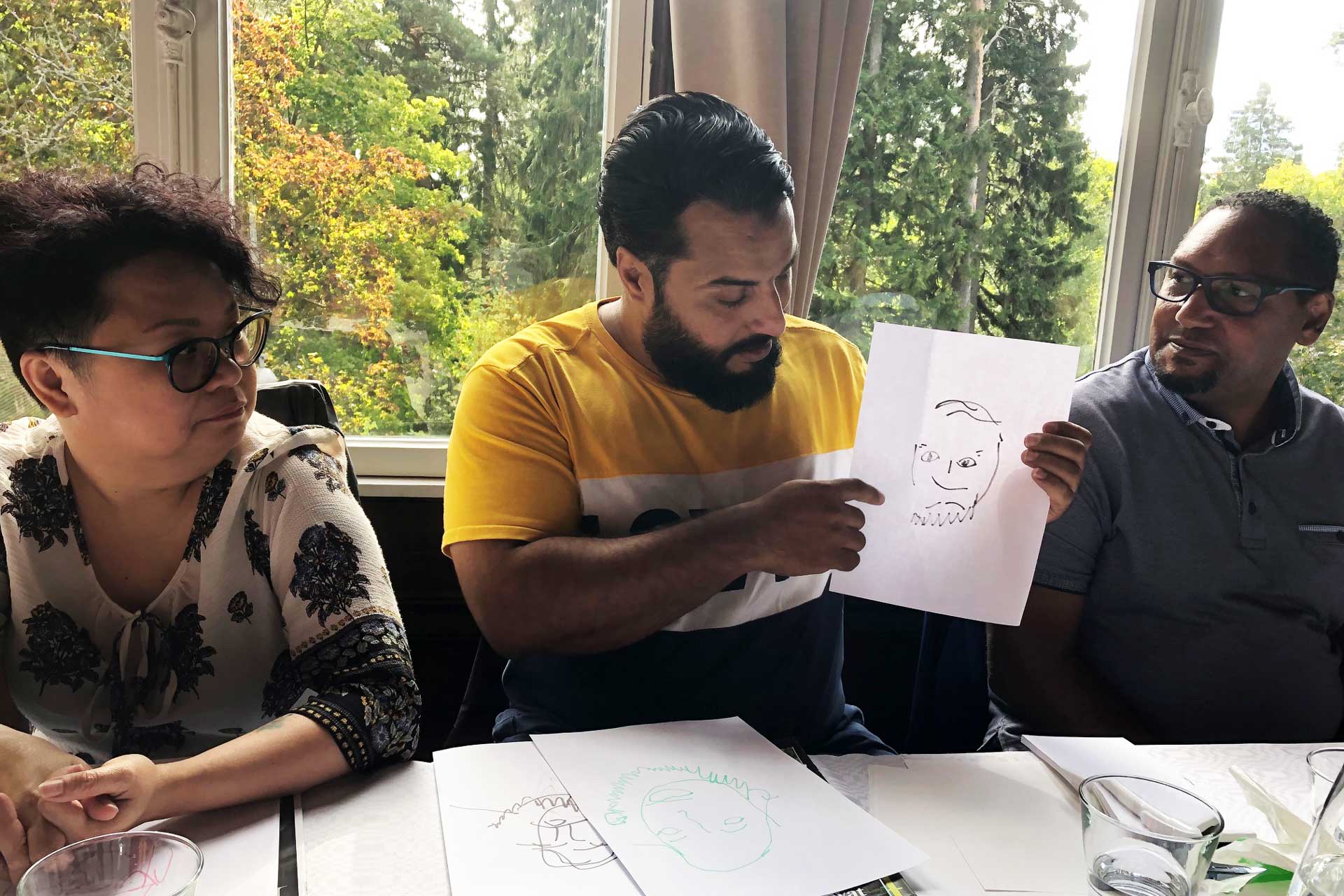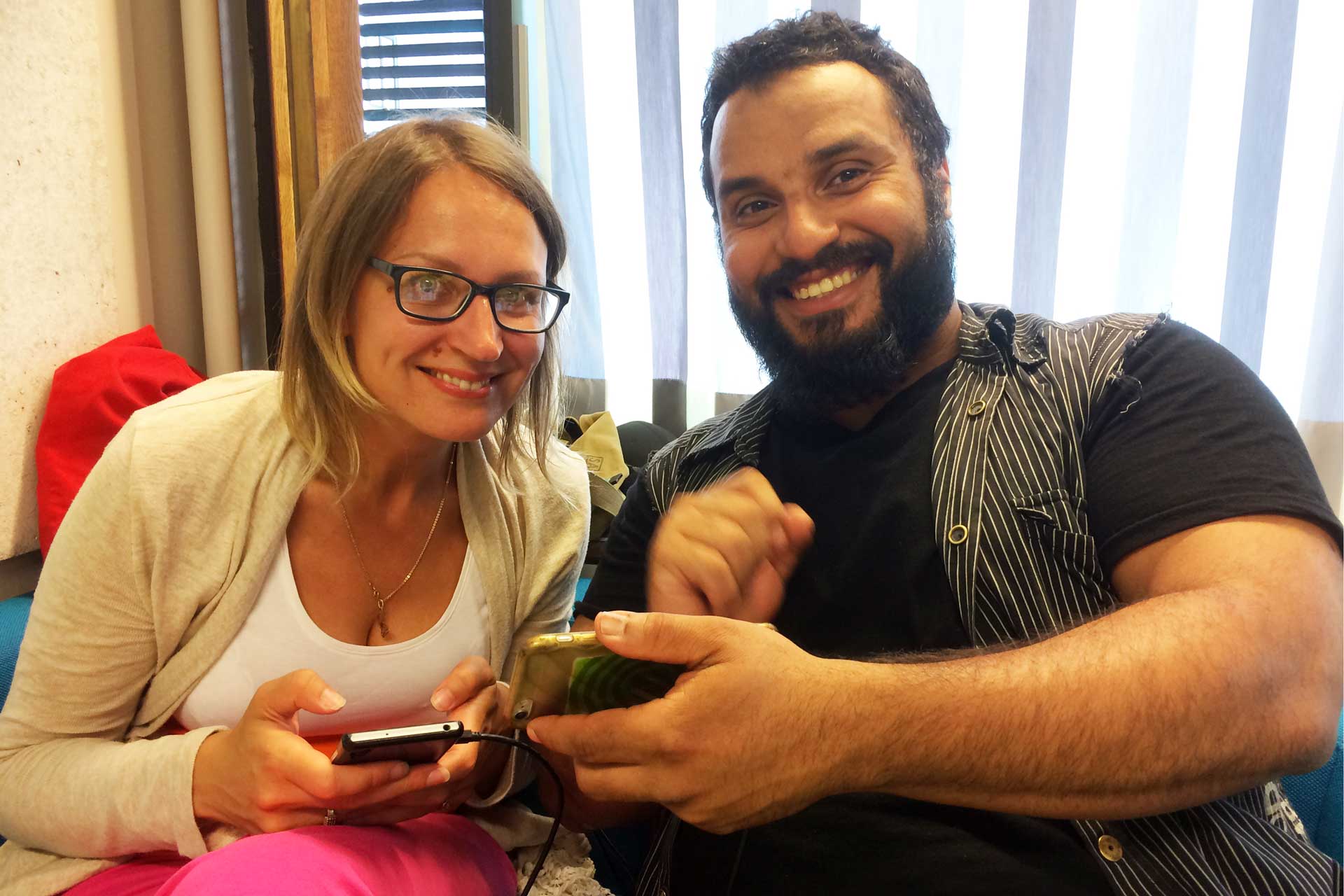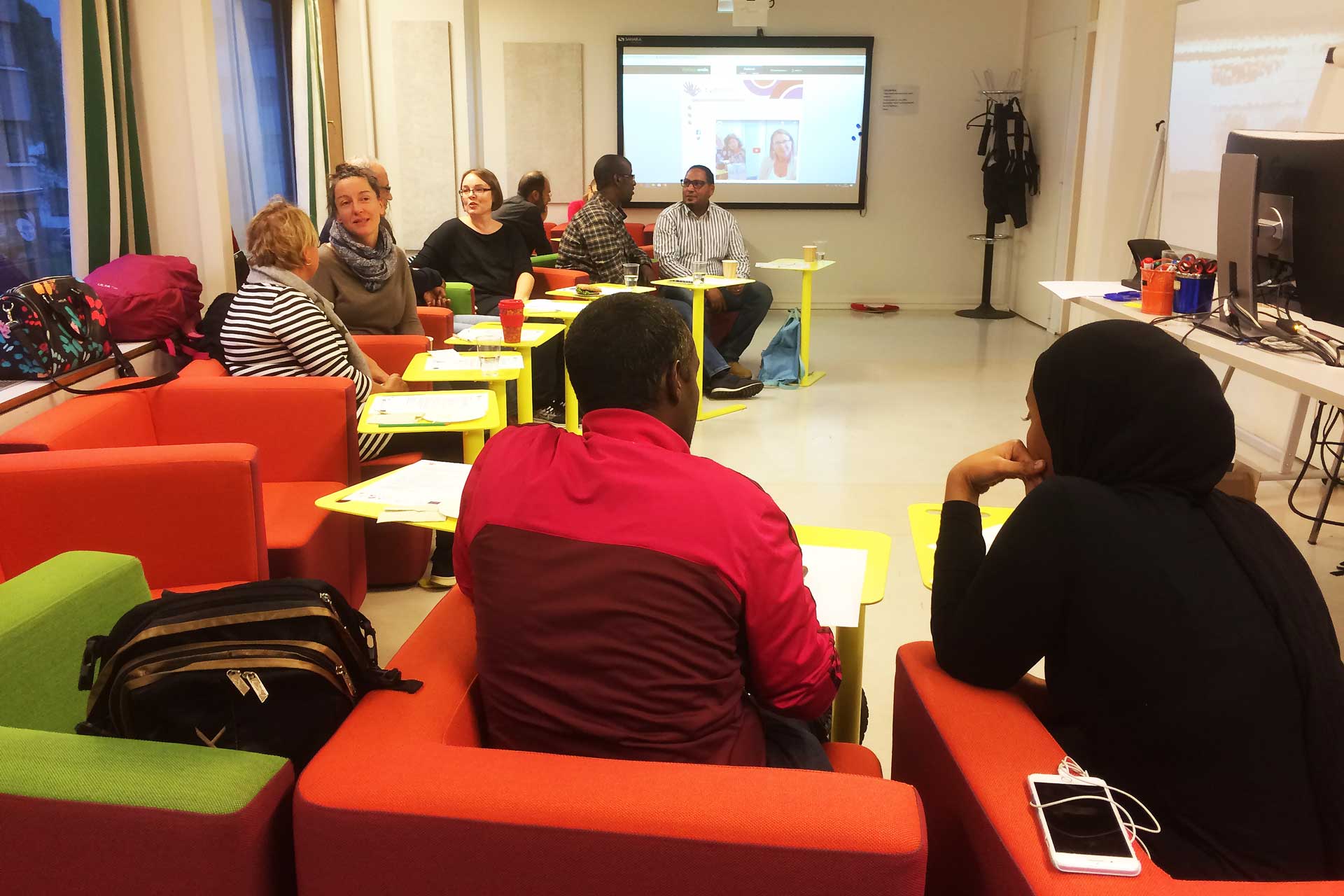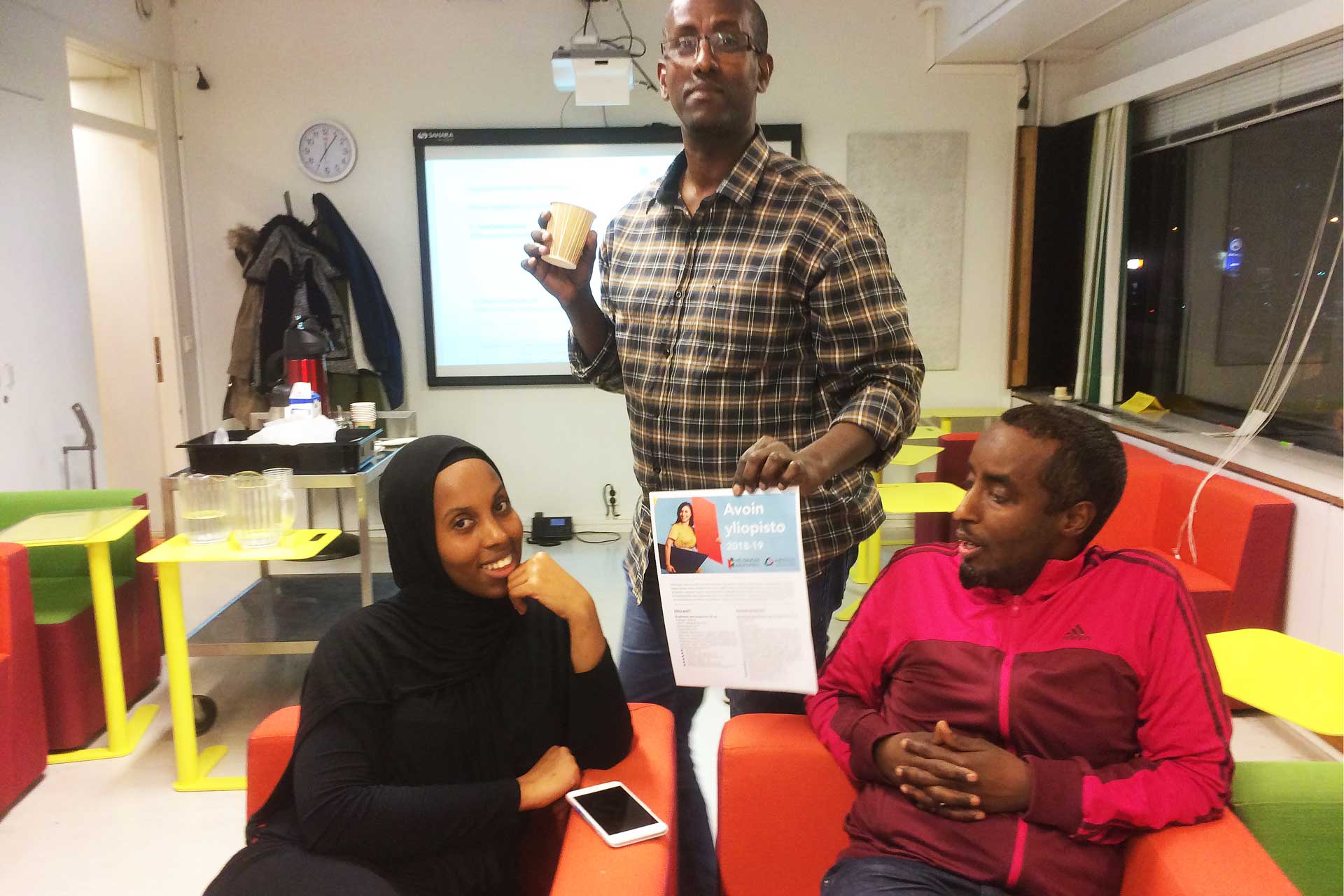The sewing circle helps its members to grow, both as a group and individually. They become strong women! The sewing circle welcomes women born overseas who find themselves far from the labour market. Creativity and community combined with skills-enhancing activities create strong women who can take their first steps into the world of work.
ABF FyrBoDal
Trollhättan, Sweden
Purpose of the method
ABF FyrBoDal’s intention in starting the sewing circle is to establish a creative platform that brings women together in a community and strengthens their skills in a secure environment. For many of these women, the road to employment is long. The aim of the sewing circle is to act as a first step along that road for those who participate.
Background
Sweden is home to many women born overseas who find themselves far from the labour market. They lack training and work experience relevant to the Swedish workplace and their Swedish language skills and social context may be holding them back. Many are also unaware of their rights.
Given the need to strengthen the position of these women with regard to future studies and employment, ABF FyrBoDal started a sewing circle in collaboration with the Swedish Public Employment Service. Participants are assigned to activities such as on-the-job training, providing them with an opportunity to attend a workplace at which they can develop the skills that will bring them closer to the labour market.
Members of the sewing circle are in need of language training, as well as knowledge of Swedish society, the Swedish workplace and their rights. The reason for choosing a sewing circle as the vehicle for the project is that many of the participants come from Somalia, where needlework is largely a male occupation; thus making the sewing circle a starting point for a dialogue on gender equality.
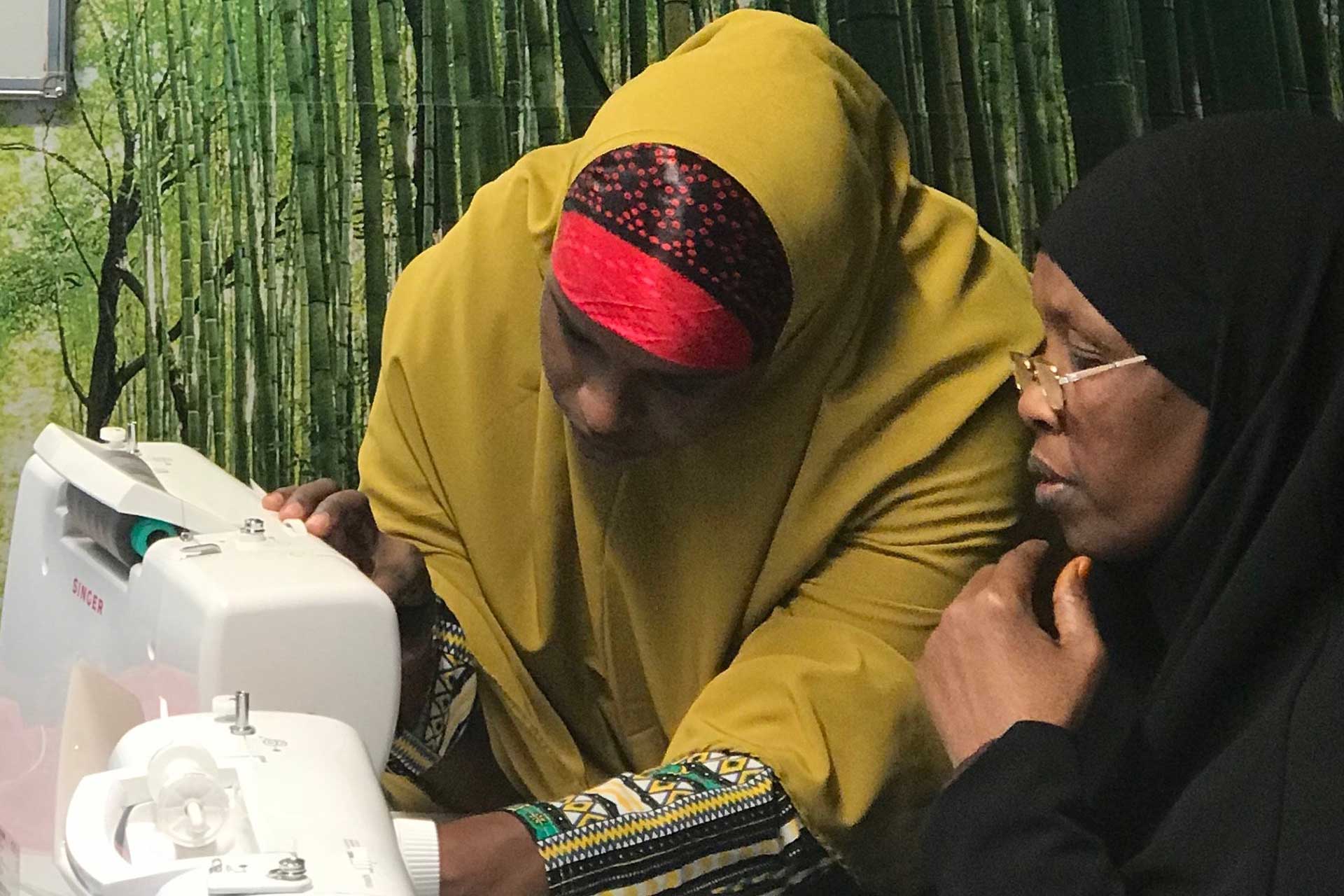
Description of method
Our activities are above all intended to create a sense of security and trust. Each participant should be able to see their own developmental needs and opportunities, ABF FyrBoDal operates from a meeting place in Trollhättan where participants meet ABF members and have the opportunity to become involved in other activities conducted by ABF on the premises.
A leader with knowledge of sewing and society forms groups consisting of between five and ten women, the majority of whom come from Somalia.
The leader of the circle, someone skilled in sewing and design, begins with practical activities; for example, participants learn how a sewing machine works, after which each of them decides what they would like to sew. During the practical introduction, we discuss the rules that apply to the sewing circle: times of attendance, what to do if you fall ill, break and lunch times, etc. The leader forms an impression of each of the participants, while they get to know one another. This is an important element of the introduction during which each participant’s needs, desire and abilities are assessed. By revealing each individual, a sense of engagement and involvement is created.
The participants naturally practice Swedish on a daily basis as they talk and sew, helping one another to understand the language. These daily conversations provide the participants with knowledge of Swedish society, the labour market and human rights. By working together creatively and maintaining an everyday dialogue regarding many of the things they need to know, the participants pick up knowledge in a natural way; a necessity if they are to be active citizens and become resources on the labour market.
The circle leader has worked closely with the University of Gothenburg in order to strengthen the group and increase knowledge of Swedish society and women’s rights. Participants have been on study visits to the university, while lecturers and researchers from the university have visited the sewing circle in Trollhättan to lecture on women’s rights and discuss the women’s own views and experiences of the subject.
Participants have also taken part in various cultural events in Trollhättan at which they have shown their work.
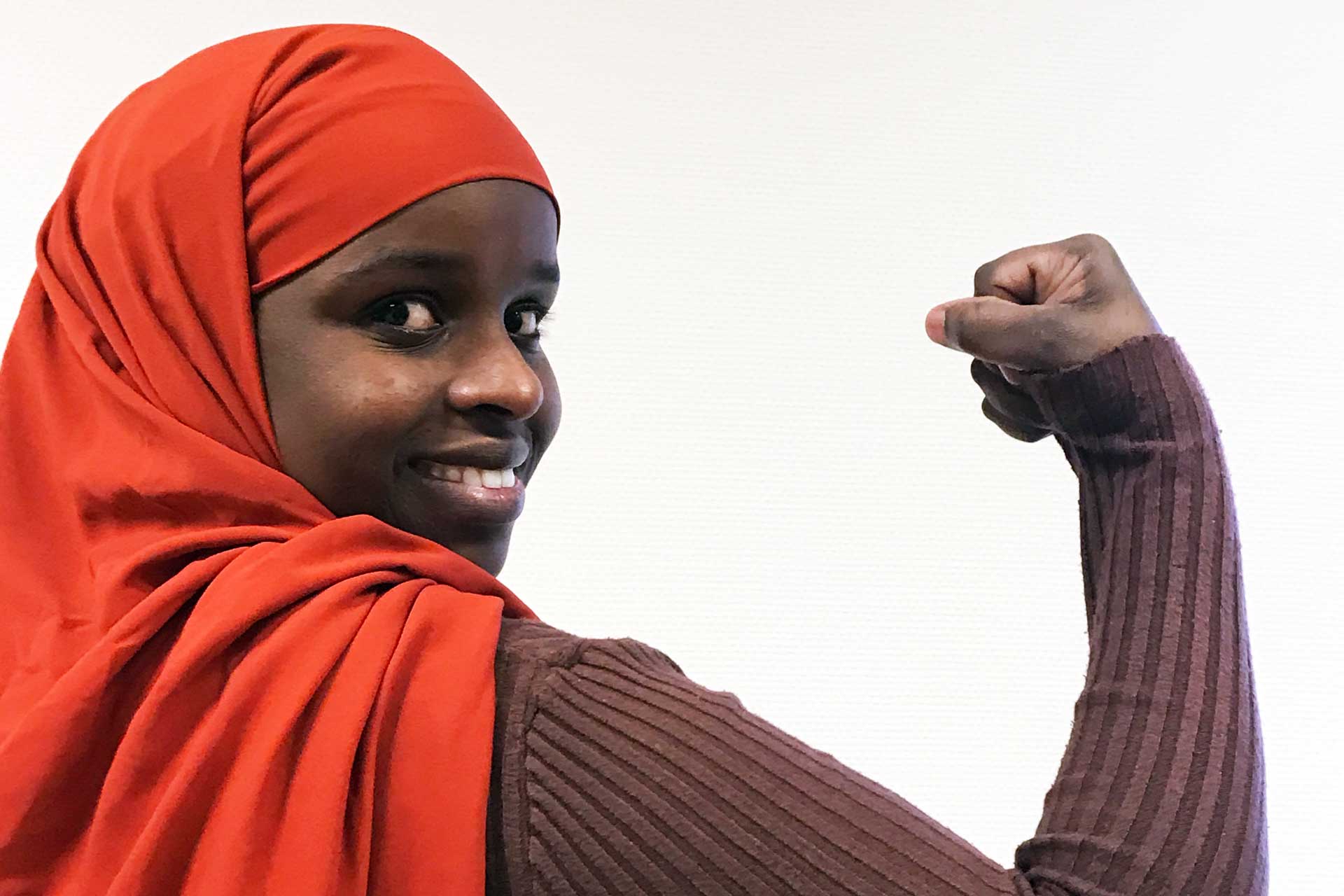

Results
In addition to increasing their knowledge of the Swedish language, society and labour market and women’s rights, almost all participants have become more proactive. The most striking aspect has been the women’s increased self-confidence and self-esteem. With the help of the circle leader, who has assisted them in contacting public authorities on various matters, several participants have also tackled and resolved personal problems.
During activities, the participants have created the exhibition Livstrådar (Life Threads) featuring clothes they have sewn and biographical texts. After opening in Trollhättan, Livstrådar has also visited Åmal and Lysekil. The intention is for the exhibition to be shown in other municipalities within ABF FyrBoDal’s catchment area.
The sense of community and positivity created in one of the sewing circle’s first groups led its members to dub themselves the “Strong Women”. These women want to create better conditions for other foreign-born women and so have founded the Strong Women Association; an association that develops and learns in order to become a robust organisation in the long term. The Strong Women Association is now a member organisation of ABF FyrBoDal.
Study materials
- Kvinnors rättigheter (Women’s Rights) in easy-to-read Swedish.
- Medborgarboken (The Citizen’s Handbook), ABF Södra Småland.
- Information videos on various professions available on the Swedish Public Employment Service’s website under SFI literature.
- Från idé till förening (From Concept to Association), folder from ABF FyrBoDal that simply explains how to start an association.
Partners
- School of Global Studies at the University of Gothenburg, Gender and Development in Practice in Gothenburg.
- Swedish Public Employment Service, Trollhättan.
- The Integration Forum Against Racism in Trollhättan.
Resources and funding
- Arranger grant from the Swedish Public Employment Service
Contact
If you have any questions about the method, please contact ABF FyrBoDal.
Links
- Women’s Voices: Civil society and immigrant women’s rights https://gadipblog.files.wordpress.com/2018/08/report-womens-voices.pdf
- The Europe we want Feminist approaches, gender, migration and democracy. https://gadipblog.files.wordpress.com/2018/11/theeuropewewant-feministapproaches-migration.pdf
- Women in diaspora: How do they meet and how they approched to society. https://gadipblog.files.wordpress.com/2018/11/women-in-diaspora-how-do-they-meet-and-how-are-they-approached-in-society.pdf
- Collaborativ learning for women’s empowerment https://gadipblog.files.wordpress.com/2019/02/collaborative-learning-for-womens-empowerment.pdf
- gadip.se
